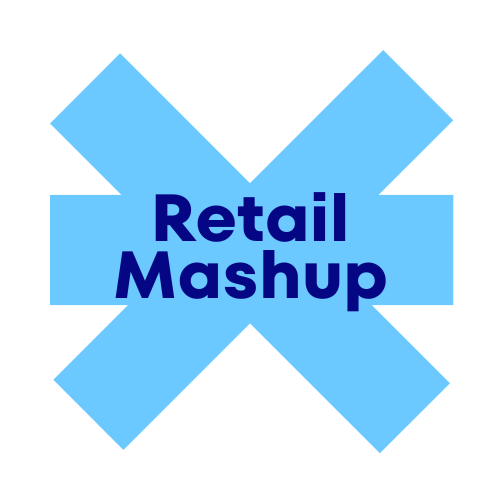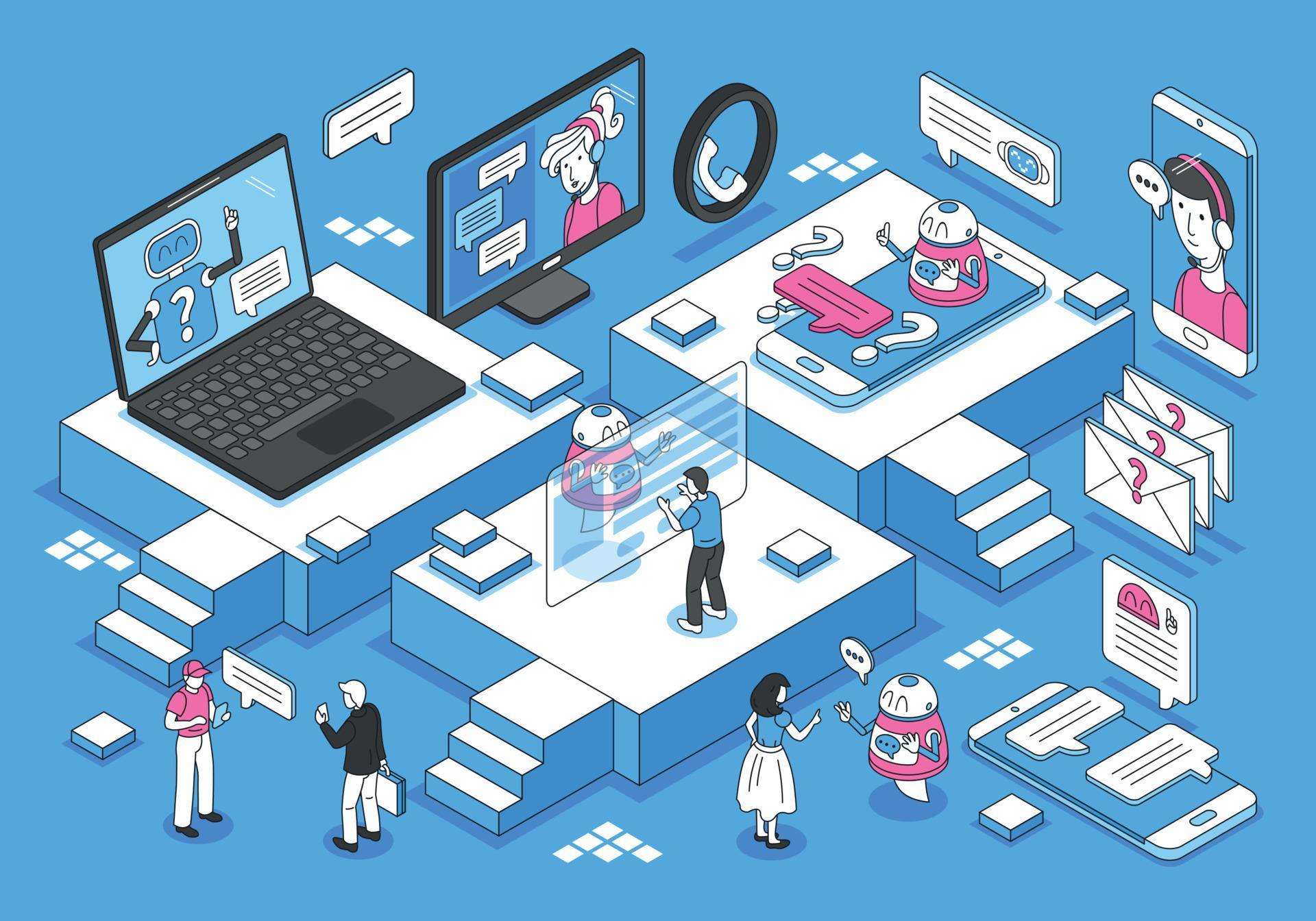Chatbots, a form of artificial intelligence (AI), have transformed how retailers engage with customers. These intelligent conversational agents are deployed on various platforms, including websites, messaging apps, and social media, to assist customers with queries, provide product recommendations, and even facilitate transactions.
Part 4 of the series will explore the definition of chatbots, their evolution in retail, examples of retailers using them, and how AI enhances both chatbots and the customer experience. Additionally, we’ll discuss the pros and cons of using AI for chatbots in retail settings.
Table of Contents
What Are ChatBots?
Chatbots are software programs designed to simulate human conversation, allowing users to interact with a computer system using natural language. In the retail sector, chatbots have evolved from basic scripted bots to sophisticated artificial intelligence (AI)-powered assistants capable of understanding and responding to complex queries.
Early retail adopters to the chatbot technology include:
- Sephora: Sephora launched its chatbot on Kik in 2016, allowing customers to interact with the bot to discover new beauty products and receive personalized recommendations.
- H&M: H&M introduced a chatbot on the messaging app Kik in 2016, enabling users to receive personalized style recommendations and browse products directly within the chat interface.
- eBay: eBay launched a chatbot on Facebook Messenger in 2016, allowing users to search for products, receive recommendations, and track orders using natural language commands.
- 1-800-Flowers: 1-800-Flowers introduced a chatbot on Facebook Messenger in 2016, enabling users to order flowers and gifts through a conversational interface.
How Is AI Involved In ChatBots?
In today’s digital age, chatbots are revolutionizing customer interactions with the help of Artificial Intelligence (AI). AI enables chatbots to understand natural language, learn from interactions, and provide personalized responses.
Natural Language Processing (NLP) allows chatbots to interpret human language, while Machine Learning (ML) helps them improve over time by analyzing data. Natural Language Generation (NLG) enables chatbots to respond in a human-like manner, enhancing user experience.

AI also enables chatbots to maintain context during conversations, personalize interactions based on user data, and continuously learn from new interactions. Additionally, AI-driven automation allows chatbots to automate tasks, saving time and resources.
Who Are The Top AI Chatbot Players Today?
Several AI chatbot companies are considered leaders in the industry today. They include:
- IBM Watson: IBM Watson offers a range of AI-powered chatbot solutions for businesses, including virtual assistants and customer service bots. Watson’s AI capabilities enable chatbots to understand natural language, learn from interactions, and provide personalized responses.
- Google Cloud Dialogflow: Google Cloud’s Dialogflow is a powerful AI platform for building natural and rich conversational experiences. It offers robust NLP capabilities and integration with Google Cloud’s other AI services.
- Microsoft Azure Bot Service: Microsoft Azure Bot Service provides tools and services for building, testing, and deploying intelligent bots. It integrates seamlessly with Microsoft’s AI services, such as Azure Cognitive Services and Azure Machine Learning.
- Amazon Lex: Amazon Lex is a service for building conversational interfaces into any application using voice and text. It powers Amazon’s Alexa and provides advanced NLP and speech recognition capabilities.
- Chatfuel: Chatfuel is a popular AI chatbot platform for creating Facebook Messenger bots. It offers a drag-and-drop interface and integration with AI services like Dialogflow for advanced functionality.
- ManyChat: ManyChat is another platform for building Facebook Messenger bots. It offers a visual bot builder and features like AI-driven conversations, broadcasting, and analytics.
- Rasa: Rasa is an open-source AI chatbot framework that allows developers to build and customize their chatbots. It offers NLP capabilities, dialogue management, and integration with popular messaging platforms.
Pros and Cons Of The AI-Powered Chatbot Technology
Many brands are exploring, evaluating, and investing into AI-powered chatbot technologies. Before doing so, brands should consider the following pros and cons:
Pros of Using AI-Powered chatbot technology:
- Improved Customer Service: According to a study by Oracle, 80% of businesses plan to use chatbots for customer interactions by 2020, highlighting the growing importance of AI-powered chatbots in enhancing customer service.
- Personalized Interactions: A report by Accenture found that 91% of consumers are more likely to shop with brands that provide personalized offers and recommendations, demonstrating the importance of AI in enabling chatbots to offer personalized interactions.
- Cost-Effective: Research by Juniper Research suggests that chatbots could help businesses save over $8 billion per year by 2022, primarily through reduced customer service costs and increased operational efficiency.
- Scalability: With AI, chatbots can handle multiple customer queries simultaneously. For example, Bank of America’s chatbot, Erica, has already handled over 100 million client requests, showcasing the scalability of AI-powered chatbots.
Cons of Using AI-Powered chatbot technology:
- Lack of Human Touch: Despite advancements in AI, some customers still prefer human interaction. A survey by PwC found that 59% of consumers feel companies have lost touch with the human element of customer experience. This is especially important if a retailer is used to interacting with customers through a high time highly physical environment.
- Initial Investment: Implementing AI-powered chatbots can be costly. According to Gartner, the average cost of developing and deploying a chatbot ranges from US$30,000 to $150,000+, depending on complexity. Beyond technology investment, training, maintenance, and continual improvement costs may also need to be factored in.
- Maintenance and Updates: AI systems require regular maintenance and updates to remain effective. According to a report by Forrester, companies spend an average of 40% of their AI budgets on ongoing maintenance and updates.
- Privacy Concerns: AI-powered chatbots collect and analyze customer data, raising privacy concerns. A survey by Edelman found that 81% of consumers are concerned about how much data companies collect on them. Part 2 of this series speaks more at length on privacy concerns.
- High Failure Rates: According to a study by Gartner, up to 80% of chatbot implementations will not deliver the desired outcomes due to various factors such as inadequate understanding of user needs, poor design, and lack of integration with other systems.
Measuring Success
Retailers can use a variety of metrics to measure the effectiveness of using AI in chatbots, particularly focusing on engagement time, issue resolution, and upselling. Here are some key metrics for each category:
Engagement Time:
- Average Session Duration: This metric tracks the average amount of time customers spend interacting with the chatbot in a single session. A higher average session duration indicates that customers are engaging with the chatbot for longer periods, which can indicate a positive user experience.
- Average Response Time: This metric measures the average time it takes for the chatbot to respond to a customer query. A lower average response time indicates that the chatbot is providing timely and efficient assistance to customers.
- Number of Interactions per Session: Tracking the number of interactions per session can provide insights into how engaged customers are with the chatbot. A higher number of interactions may indicate that customers are finding the chatbot helpful and are actively seeking information or assistance.
Issue Resolution:
- First Contact Resolution Rate: This metric measures the percentage of customer issues resolved during the first interaction with the chatbot. A higher first-contact resolution rate indicates that the chatbot effectively resolves customer issues without needing escalation.
- Resolution Time: This metric tracks the average time it takes for the chatbot to resolve customer issues. A lower resolution time indicates that the chatbot is efficient at resolving issues, which can lead to higher customer satisfaction.
- Customer Satisfaction (CSAT) Score: While not specific to issue resolution, the CSAT score measures overall customer satisfaction with the chatbot experience. A high CSAT score indicates that customers are satisfied with the chatbot’s ability to resolve their issues.
Upselling:
- Conversion Rate: This metric measures the percentage of interactions with the chatbot that result in a successful upsell. A higher conversion rate indicates that the chatbot is effective at driving additional sales.
- Average Order Value (AOV): Tracking the AOV of customers who interact with the chatbot can provide insights into the effectiveness of upselling efforts. A higher AOV among chatbot users indicates that the chatbot is successful at encouraging customers to purchase additional items.
- Upsell Success Rate: This metric measures the percentage of upselling attempts that result in a successful upsell. A higher upsell success rate indicates that the chatbot is effective at persuading customers to make additional purchases.
By tracking these metrics, retailers can assess the effectiveness of using AI in chatbots and make informed decisions to optimize their chatbot strategies for improved engagement, issue resolution, and upselling.
Looking Ahead
Incorporating AI in chatbots to further improve customer engagement, issue resolution, and upselling requires a strategic approach. Looking ahead, brands should go on a journey to explore their capabilities, capacities, and general expertise in the following areas:
1. Determining the Customer Engagement/Communication/Feedback Strategy
- Explore and finalize a strategy for customer engagement and evaluate why AI-powered chatbot technology should be used over other forms of communication
- Determine the touch points where the technology would be maximized
- Determine whether the chatbot would be used in the process (e.g., sales, support, general information, etc.)
2. Implementing/Enhancing Natural Language Processing (NLP) Capabilities
- Invest in advanced NLP algorithms to improve the chatbot’s ability to understand and respond to complex queries more accurately and efficiently.
- Implement sentiment analysis to gauge customer emotions and tailor responses accordingly, leading to more personalized interactions and improved issue resolution.
3. Implementing Machine Learning (ML) for Personalization
- Utilize ML algorithms to analyze customer data and behavior patterns, enabling the chatbot to offer personalized product recommendations and upsell opportunities.
- Leverage ML for continuous learning and improvement of the chatbot’s responses based on customer interactions and feedback.
4. Introducing Chatbot Analytics and Reporting
- Implement robust analytics tools to track key metrics related to engagement time, issue resolution, and upselling.
- Use data-driven insights to identify trends, optimize chatbot performance, and enhance the overall customer experience.
5. Integrating with CRM and other Platforms
- Integrate the chatbot with customer relationship management (CRM) systems to access customer data and provide more personalized interactions.
- Integrate with e-commerce platforms to facilitate seamless transactions and upselling opportunities directly within the chatbot interface.
6. Enhancing Multi-channel Support
- Extend chatbot support to additional channels such as voice assistants, social media platforms, and messaging apps to reach customers wherever they are.
- Ensure consistent and seamless experiences across all channels to improve customer satisfaction and engagement.
- Omni-channel support should be mapped out and seamlessly integrated to remove friction.
7. Implementing Proactive Engagement
- Use AI to analyze customer behavior and predict needs, enabling the chatbot to proactively reach out with relevant information or offers/deals.
- Proactively address potential issues before they escalate, improving customer satisfaction and loyalty.
8. Integrating Human-Assisted Support
- Implement a seamless handoff between the chatbot and human agents for complex issues that require human intervention.
- Use AI to assist human agents by providing relevant information and suggestions, improving issue resolution and customer satisfaction.
9. Continuous Monitoring and Optimization
- Regularly review chatbot interactions, feedback, and performance metrics to identify areas for improvement.
- Continuously update and optimize the chatbot’s algorithms and responses based on user feedback and changing customer needs.
10. Metrics for Success
- Determine what metrics to use to determine success for the technology (i.e., improved sales, customer satisfaction, level 1/2 interactions, etc.)
- Use metrics that may be cross-departmental to maximize its contribution.
Looking ahead, retail brands have lots to think about before committing to an AI-powered chatbot.
Follow this link for more information about the Retail Mashup content platform
Follow this link for more insights
Follow this link for more podcast episodes
Follow this link to participate in regular polls









[…] Maximizing The ChatBots: AI Evolution In Retail (Part 4) […]
[…] Maximizing The ChatBots: AI Evolution In Retail (Part 4) […]